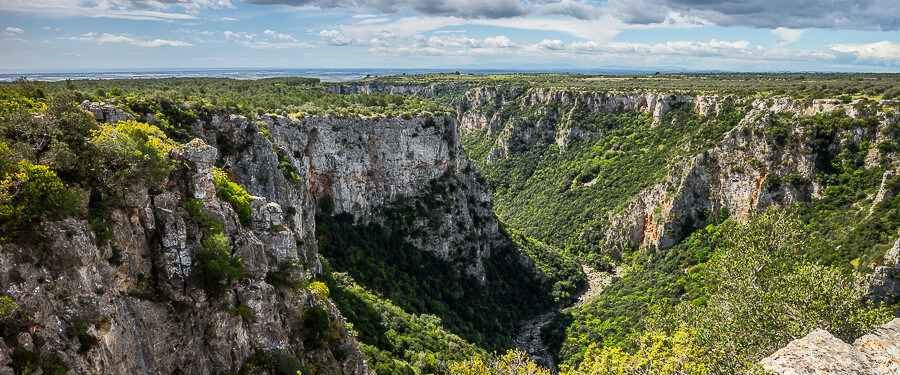




 Among the ravines flowing toward the Gulf of Taranto, Laterza is the most spectacular. Undoubtedly the Gravina di Laterza is one of the largest canyons in Europe and it is the most impressive expression of a particular territory known as "Gravine dell'Arco Jonico" (Ravines of the Jonic Arch), which extends from Gravina in Puglia to Grottaglie. Dozens are the ravines arranged in a fan shape around the Gulf of Taranto, each of them different in size and morphology.
Among the ravines flowing toward the Gulf of Taranto, Laterza is the most spectacular. Undoubtedly the Gravina di Laterza is one of the largest canyons in Europe and it is the most impressive expression of a particular territory known as "Gravine dell'Arco Jonico" (Ravines of the Jonic Arch), which extends from Gravina in Puglia to Grottaglie. Dozens are the ravines arranged in a fan shape around the Gulf of Taranto, each of them different in size and morphology.
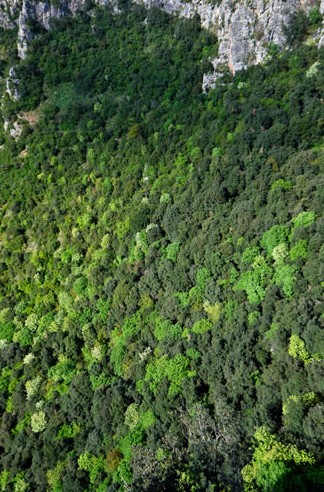 A rupestrian civilization has developed around and within them over millennia of history, leaving evident traces in culture, history, art and, above all, in a life conception in close contact with nature. The gravina of Laterza has an original meandering course that develops for 12 km in length and about 400 meters in width, between rock walls worn by erosion and smooth whitish limestone walls even more than 200 meters high, scattered with innumerable cavities and ledges suspended in the void.
A rupestrian civilization has developed around and within them over millennia of history, leaving evident traces in culture, history, art and, above all, in a life conception in close contact with nature. The gravina of Laterza has an original meandering course that develops for 12 km in length and about 400 meters in width, between rock walls worn by erosion and smooth whitish limestone walls even more than 200 meters high, scattered with innumerable cavities and ledges suspended in the void.
From a naturalistic point of view, the ravine is similar to an "island" where several plant and animal species of great interest have remained isolated from the original environmental context which, especially for anthropic reasons, has changed radically in recent centuries. Thanks to the harshness of the places, the woods of "fragno" (Quercus trojana) present in Italy only in Low Murgia and less frequently in the Alta Murgia, managed to survive. The endemic campanula versicolor, with beautiful pale purple flowers, blooms from June to October and covers the walls of the ravine in patches. The arborescent euphorbia, the rock rose, the terebinth, the mastic and the juniper climb on the less steep and always green walls thanks to the presence of the holm oak. In spring along the paths of the ravine it is possible to admire colorful blooming orchids.
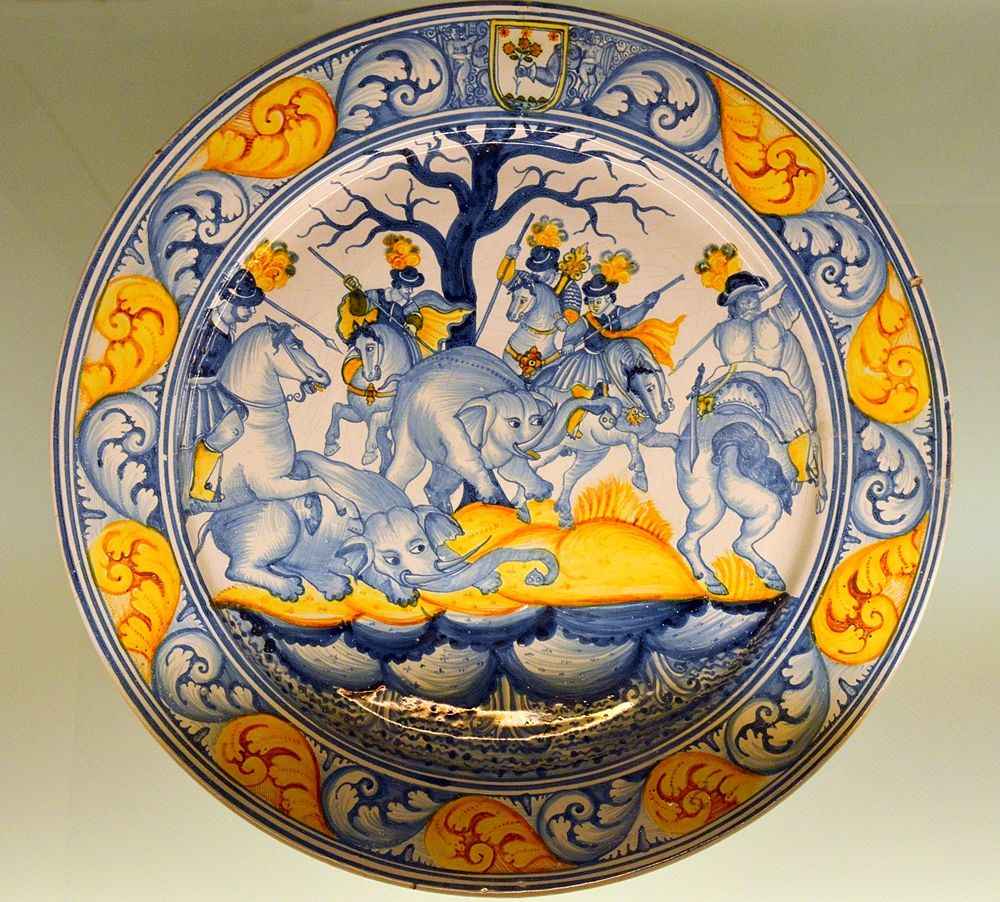
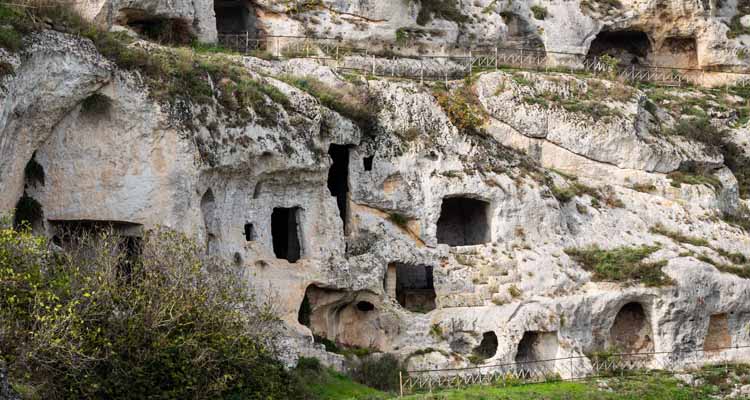 In the heart of the ravine there is the rupestrian habitat of Laterza, where human attendance is attested by the numerous archaeological finds.
In the heart of the ravine there is the rupestrian habitat of Laterza, where human attendance is attested by the numerous archaeological finds.
The rupestrian habitat contains churches and other environments dug into the rock and tuff, for a total of about 30 units still partially unexplored.
From the gravina rock to the ceramic, Laterza boasts the peculiar production of white majolica, polished and decorated mainly with the colors of blue and yellow, a true signature of the Laertine potters who distinguishes the precious objects at any latitude.
The historic center of the village develops among mighty walls, the depth of the ravine and the castle thus emphasizing the strong medieval soul that also emerges from the succession of whitewashed houses along paths, stairways and characteristic squares.
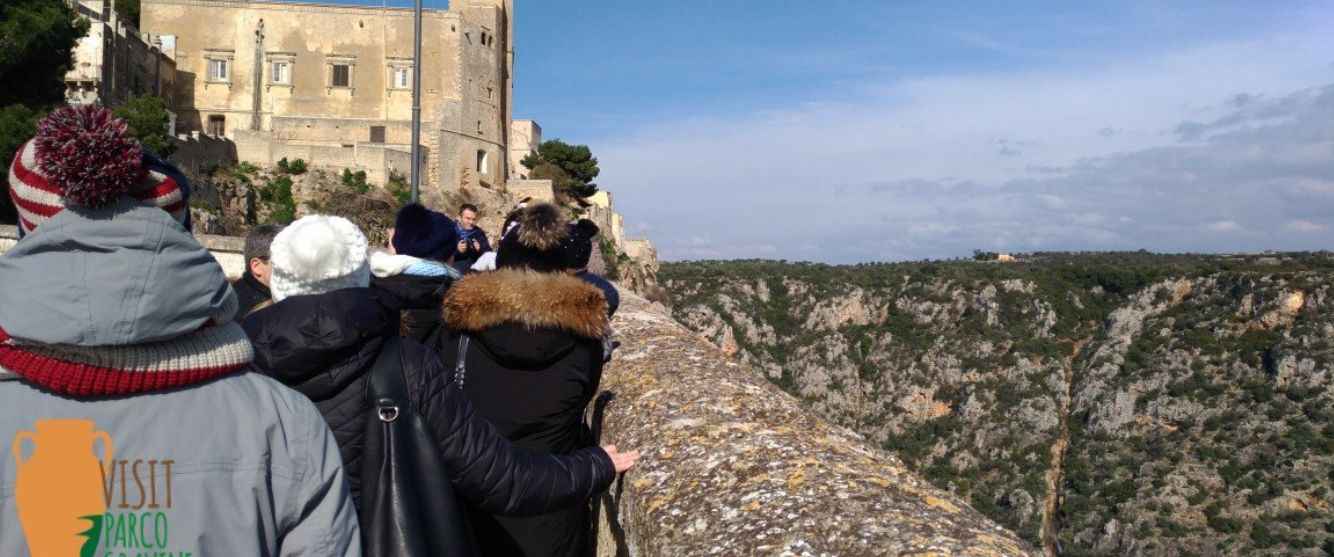
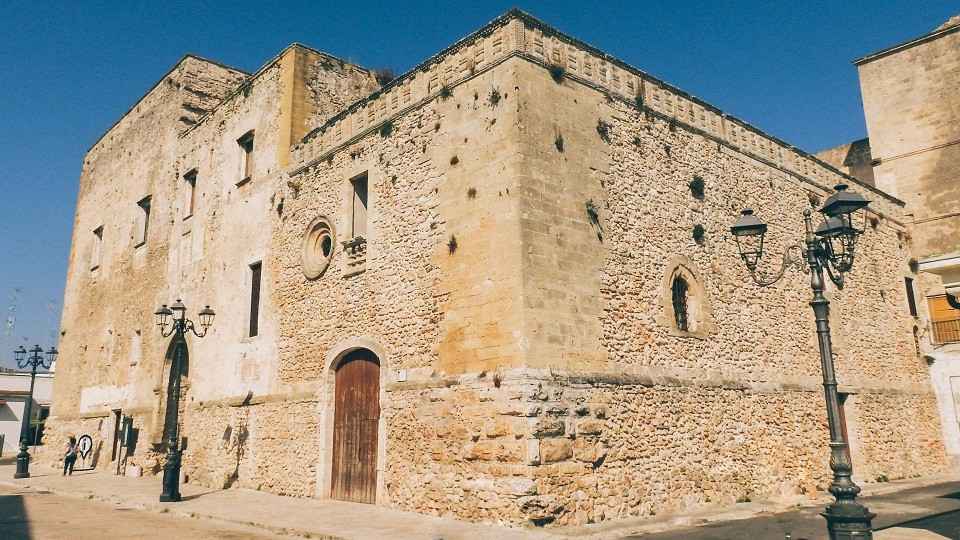 Overlooking the deep ravine of the ravine, the Marquisal Palace dominates and characterizes the landscape of Laterza. The Marquisal Palace of Laterza was built in 1548, on the ruins of the ancient 14th century castle. A basement about two meters deep of the original fortified complex still survives today and it is linked to the church of Vittoria.
Overlooking the deep ravine of the ravine, the Marquisal Palace dominates and characterizes the landscape of Laterza. The Marquisal Palace of Laterza was built in 1548, on the ruins of the ancient 14th century castle. A basement about two meters deep of the original fortified complex still survives today and it is linked to the church of Vittoria.
It was in the 16th century that the Azzia feudal lords decided to completely rebuild the fortress, making if into a more dignified, hospitable and safe noble residence, still maintaining some parts of the previous structure. The palace, as well as in the case of the previous castle, needed significant defensive measures on the north side, while, on the south side, the cliffs of the ravine provided a natural and impenetrable defense for the entire town. Instead, it was at the northern side where a moat, a drawbridge, crenellated walls and loopholes existed once. The structure shows the typical forms of the late Renaissance mansion. Trapezoidal in plan, it has numerous rooms including stables, warehouses, taverns and other services necessary for carrying out activities related to the properties of the fiefdom. On the noble floor, on the right side of the building, there were the aristocratic apartments with two rows of parallel rooms.
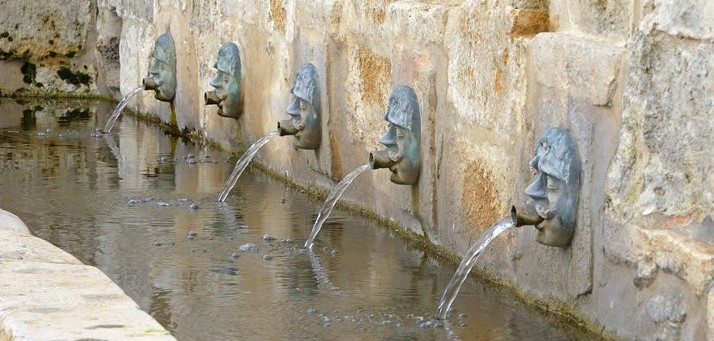
The rupestrian churches mainly insist on the various slightly incised karstic valleys that converge on via Concerie, and today have become streets running close to the deep ravine. These include the rupestrian church of San Giorgio, the crypt of the Spanish winery and the rupestrian church of Christ the Judge.
A surprising pictorial cycle and impressive sculptural decorations adorn this beautiful rupestrian church of Laterza. In the San Pietro district, in Laterza, in the center of the rupestriany area between the Sanctuary of Mater Domini and the ravine, the Spanish winery was founded in 1664 by Don Francesco Perez Navarrete, a Spanish nobleman who settled in Puglia. The winery supposedly was used by the Marquis of Laterza for gallant meetings and Masonic-type gatherings but it is likely to have been used in more remote times as a sacred environment, an ambiguity that is reflected in the fascinating pictorial decorations. Characterized by three rooms, closed by an apse, the cave church preserves the splendid paintings, such as the Nativity and the Expulsion of the Progenitors, in the first room, followed by a parade of ladies and knights in costume and the parody of a parade of priests in liturgical dress
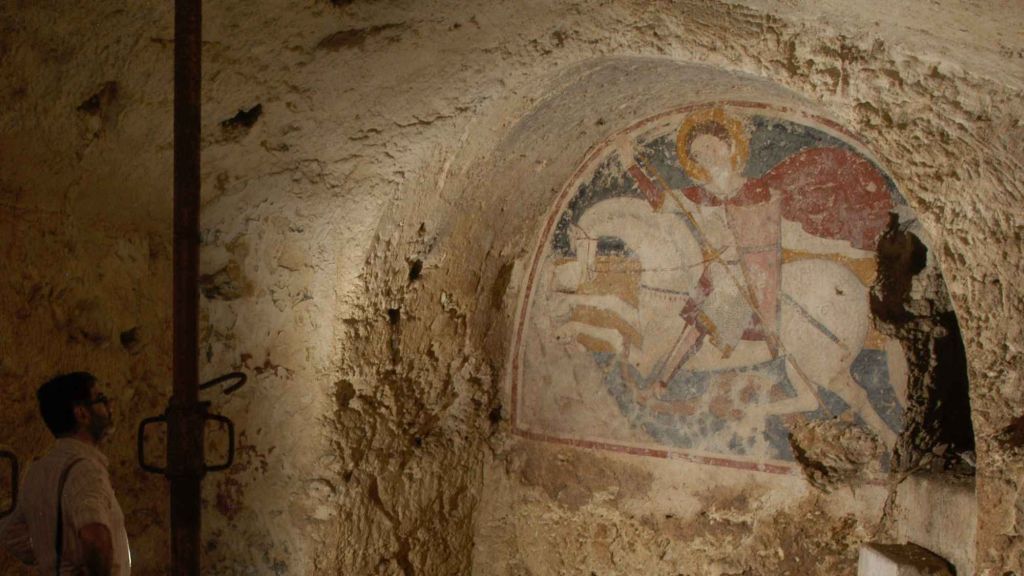 In the homonymous district, hidden by a rural building, there is the rupestrian church of San Giorgio, until a few years ago accessible only through a trapdoor, by passing through an oil mill, now finally reopened and can be visited from its original entrance. The crypt consists of a single rectangular hall with a humpback ceiling and apsidal basin on the bottom, while two seats run longitudinally to the two side walls. Traces of the ancient Byzantine frescoes peek out from the walls, like San Giorgio in medieval clothes and a beautiful diptych depicting the Madonna and Child and a scene from the life of the titular saint.
In the homonymous district, hidden by a rural building, there is the rupestrian church of San Giorgio, until a few years ago accessible only through a trapdoor, by passing through an oil mill, now finally reopened and can be visited from its original entrance. The crypt consists of a single rectangular hall with a humpback ceiling and apsidal basin on the bottom, while two seats run longitudinally to the two side walls. Traces of the ancient Byzantine frescoes peek out from the walls, like San Giorgio in medieval clothes and a beautiful diptych depicting the Madonna and Child and a scene from the life of the titular saint.
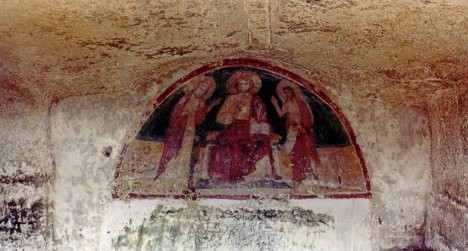 An open door on the side of a rupestriany wall leads to a hidden garden, which leads to the ancient rupestrian church dedicated to Christ the Judge, a witness of the religious past of Laterza, beautifully frescoed. With two naves, the interior has a rectangular plan, marked by a central pillar and two large arches, with a single frescoed apse, with the representation of a fourteenth-century Deesis, with Christ Pantocrator, the Virgin and Saint John the Baptist.
An open door on the side of a rupestriany wall leads to a hidden garden, which leads to the ancient rupestrian church dedicated to Christ the Judge, a witness of the religious past of Laterza, beautifully frescoed. With two naves, the interior has a rectangular plan, marked by a central pillar and two large arches, with a single frescoed apse, with the representation of a fourteenth-century Deesis, with Christ Pantocrator, the Virgin and Saint John the Baptist.

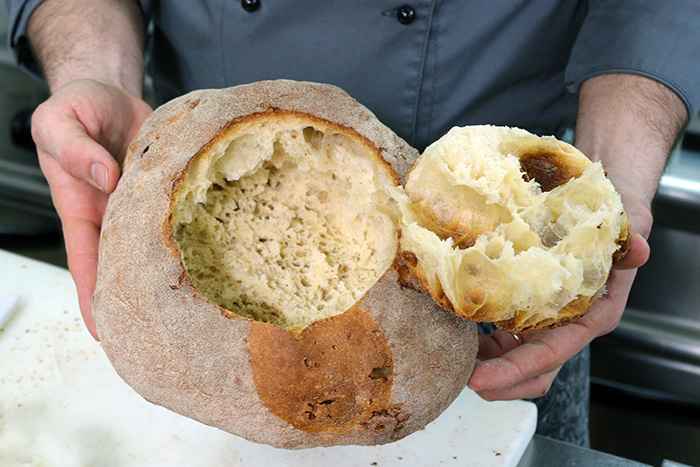 Throughout the Murgia area, almost all towns can boast excellent bread and Laterza is one of them. Not only Altamura and Matera then! The well-known Laterza bread is also produced here, obtained with re-milled durum wheat flour. It is one of the most loved bakery products in Puglia and the town has fully become one of the Cities of Bread in Italy.
Throughout the Murgia area, almost all towns can boast excellent bread and Laterza is one of them. Not only Altamura and Matera then! The well-known Laterza bread is also produced here, obtained with re-milled durum wheat flour. It is one of the most loved bakery products in Puglia and the town has fully become one of the Cities of Bread in Italy.
